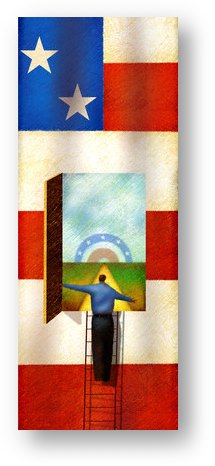This is the third of my three-part list of the best documentaries that focus on immigration and are great choices for showing in high school and college immigration classes. This third and final part will focus specifically on issues related to socioeconomic attainment, mobility, and assimilation — the individual-, community-, and institutional-level processes involved as immigrants (regardless of their legal status) become integrated into the rest of U.S. society.
Part 1 focused on the historical and global context of immigration and Part 2 looked at unauthorized immigration. The following list is organized by topic and corresponds to the chronological order in which I discuss each topic in my “Sociology of Immigration” course. For each topic, I highlight the documentary that I tend to show the most often, followed by other videos that are good choices for that topic as well.

Socioeconomic Mobility and Settlement Patterns
What are the historical and contemporary patterns of educational, occupational, and income attainment on the part of immigrants and how do such patterns compare across waves of immigration, nationality/ethnic group, and in relation to U.S.-born racial/ethnic groups? Also, what are some recent developments regarding where immigrants settle, how they create their own communities and enclaves, and role of these ethnic communities in their overall assimilation process?
- Saigon USA: Summarizes the exodus of refugees out of Viet Nam, how many of them eventually settled in Orange County CA, the formation of the Little Saigon enclave, and the ways in which Vietnamese Americans reflect both old and new ways, and the ways in which they’re socially divided yet united as well.
- Bittersweet Roots: The Chinese in California’s Heartland
- Dinka Diaries
- Rain in a Dry Land
- Little Manila: Filipinos in California’s Heartland
- Chinatown: Strangers in a Strange Land
- Nuestra Comunidad: Latinos in North Carolina
Assimilation and Ethnic Identity
In this section, I focus on the assimilation and integration process on the individual level. Specifically, I look at the different forms of forms of assimilation that immigrants undergo, the factors that affect their own personal racial/ethnic/cultural identity, and how community- and institutional factors influence whether immigrants experience upward or downward assimilation through time.
- The Neo-African Americans: Using interviews and case studies, this documentary explores the experiences of African and Black Caribbean immigrants to highlight the inter-ethnic issues involved as African immigrants navigate the transition to U.S. society and where they fit into the larger “Black” community in the U.S.
- Africans in America: Unfolding of Ethnic Identity
- ‘Redlining’ episode of After the Immigrant
- Bronx Princess
- Discovering Dominiga
- Refugee
- aka Don Bonus
- Monkey Dance
Language, Religious, and Political Incorporation
This section explores assimilation and integration specifically related to native language retention vs. English acquisition among immigrants, their religious patterns and the roles that religious organizations play in their lives, and their patterns of participating in the political process at various levels and in particular, the prospects of immigrants leveraging their growing population size into greater political power.
- Latinos ’08: This question of Latino immigrants parlaying their growing numbers into more political power is at the heart of this excellent PBS documentary. It explores the demographic changes taking place within the Latino population and the communities in which they’re increasingly prominent, their history of activism, and some challenges they face internally and from more established racial/ethnic groups in the volatile world of politics.
- “The Governor” episode of Searching for Asian America
- “Muslim” episode of 30 Days (Season 1)
- A Village Called Versailles
- Mexican Americans: A Class Apart
- Made in L.A.
Emerging Issues and a Changing National Identity
In this final section of my “Sociology of Immigration” course, I reflect back on where immigrants to the U.S. have been — politically, economically, and culturally — and just as important, take a look at where immigration and immigration policy are headed as we move forward into the 21st century and in particular, as we become more culturally diverse, globalized, and transnational.
- California and the American Dream: The New Los Angeles: This documentary examines how Los Angeles transformed from a conservative, virtually all-White city into a vibrant and multicultural metropolis. Through historical and contemporary examples, it illustrates both the challenges and rewards involved in creating and managing such a diverse social, political, and economic space.
- “The City and the World” episode (#7) of New York: A Documentary Film
- Secrets of Silicon Valley
- Do You Speak American?
- American Made
- “Filipino Doctors” segment of Searching for Asian America


